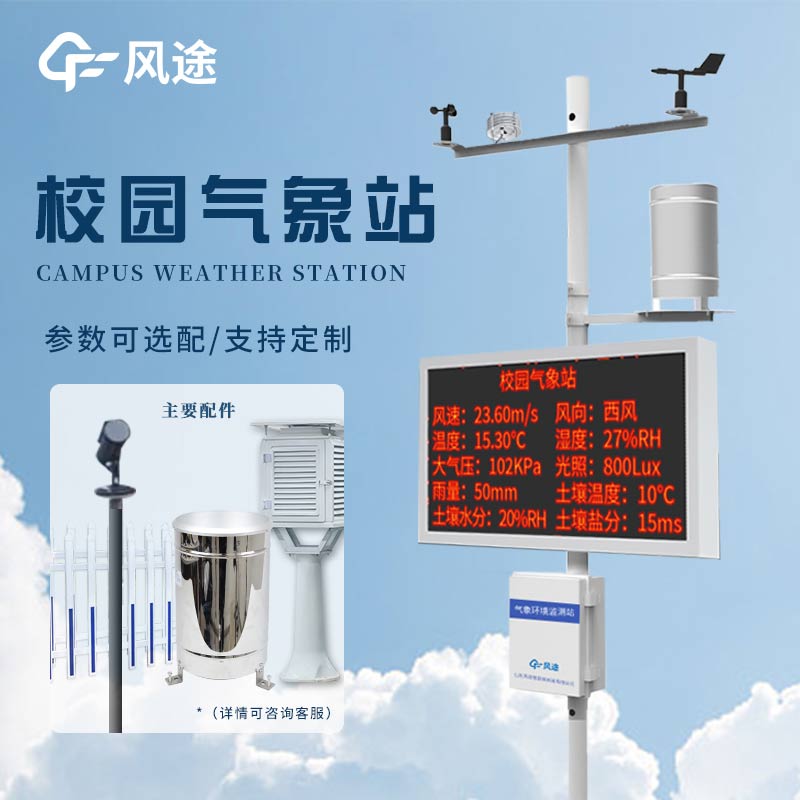Meteorological environment monitoring equipment supplier
Insist on doing high-precision customer favorite technology products
What are the meteorological science popularization teaching equipments?
I. Meteorological observation instrument category
Small weather stations can usually measure basic meteorological parameters such as temperature, humidity, air pressure, wind speed and wind direction. It enables students to intuitively understand the measurement methods and change laws of different meteorological elements. For example, students can understand the temperature, humidity and other information of the day by observing the data display screen of the small weather station and compare it with the weather forecast.
Wind vanes are used to indicate wind direction, and anemometers measure wind speed. These devices can help students understand the influence of wind direction and intensity on the weather. For example, when explaining the formation and function of wind, wind vanes and anemometers can be used for on-site demonstrations to let students observe the changes of wind.
Rain gauges are used to measure rainfall. Students can understand the amount of rainfall in different time periods by observing the water level change in the rain gauge. This helps students understand the formation and distribution laws of precipitation.
II. Meteorological simulation equipment category
Meteorological science popularization interactive software introduces meteorological knowledge to students through multimedia display and interactive games. For example, the software can contain animation demonstrations of meteorological phenomena, meteorological knowledge quizzes, meteorological disaster simulations and other contents, allowing students to learn meteorological knowledge in a relaxed and pleasant atmosphere.
Meteorological sand tables show the relationship between topography, landforms and meteorological phenomena. By simulating meteorological changes under different terrain conditions, such as the formation of clouds and fog in mountainous areas and sea breezes in coastal areas, it helps students understand the influence of geographical environment on meteorology.
Artificial simulated rainfal generators can simulate rainfall processes of different intensities and let students observe the formation, fall and runoff of rainwater. This is very helpful for explaining the water cycle and the impact of precipitation on the surface.
III. Meteorological display teaching aid category
Meteorological science popularization display boards display meteorological knowledge in the form of pictures and texts, including explanations of meteorological phenomena, prevention of meteorological disasters, climate change and other contents. The display boards can be arranged in classrooms or on campus for students to learn at any time.
Meteorological models such as globes and atmospheric circulation models. Globes can help students understand the climate characteristics of different regions and the distribution laws of meteorological phenomena; atmospheric circulation models can intuitively show the movement of the atmosphere and the principles of meteorological changes.
Meteorological science popularization books and materials provide rich meteorological knowledge books, magazines and materials for students to read and learn. These materials can be used as a supplement to classroom teaching to help students deeply understand meteorological science.
